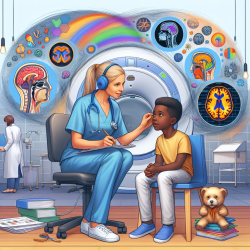As speech therapists, we continually seek innovative methods to improve our clinical practices and outcomes for individuals who stutter. Groundbreaking research, such as the positron emission tomography (PET) studies on stuttering, offers valuable insights that can transform our therapeutic approaches. This article delves into how these studies enhance our understanding of stuttering and suggests ways to integrate these findings into clinical practice.
Stuttering is a complex fluency disorder characterized by involuntary speech interruptions. Traditional therapy approaches have ranged from stuttering modification to fluency shaping techniques. However, recent advances in functional neuroimaging, particularly PET studies, provide a deeper understanding of the neural substrates involved in stuttering, offering new avenues for therapy.
PET studies, as reviewed in "Positron Emission Tomography Studies of Stuttering: Their Relationship to Our Theoretical and Clinical Understanding of the Disorder," highlight the atypical lateralization in individuals who stutter. Specifically, these studies reveal differences in brain activation patterns between stuttering and nonstuttering individuals during speech tasks. For example, increased activation in the right hemisphere and reduced activation in traditional language areas in the left hemisphere have been observed in individuals who stutter. This atypical neural activity offers a neural basis for stuttering, suggesting that therapy might not only aim at improving fluency but also at reorganizing these neural patterns.
Implications for Clinical Practice
- Personalized Therapy: Understanding the specific neural patterns associated with stuttering allows therapists to tailor interventions. For example, therapies that stimulate left-hemisphere activity might be beneficial for some individuals.
- Integration of Cognitive and Behavioral Techniques: Given the involvement of brain areas associated with attention and motor planning, integrating cognitive strategies with traditional speech therapy techniques could offer a more holistic approach to treatment.
- Use of Technology: Advanced neuroimaging findings encourage the exploration of technologies, such as neurofeedback and transcranial magnetic stimulation, as adjuncts to speech therapy.
- Focus on Maintenance: PET studies underscore the importance of long-term maintenance of fluency. Therapy programs should include strategies for sustaining neural changes to support lasting fluency.
Encouraging Further Research
While PET studies provide a promising direction, ongoing research is crucial for translating these findings into effective therapies. Speech therapists can contribute by participating in research, staying informed about the latest studies, and applying evidence-based practices in their work.
In conclusion, PET studies of stuttering enrich our theoretical and clinical understanding of this complex disorder. By integrating these insights into our practice, we can enhance the efficacy of stuttering therapy, offering hope for individuals struggling with stuttering. As we continue to unravel the neural underpinnings of stuttering, the future of speech therapy looks promising, with more personalized and effective treatments on the horizon.
For speech therapists and researchers interested in exploring this topic further, I highly recommend reading the original research paper for a comprehensive understanding. To read the original research paper, please follow this link: Positron Emission Tomography Studies of Stuttering: Their Relationship to Our Theoretical and Clinical Understanding of the Disorder.










